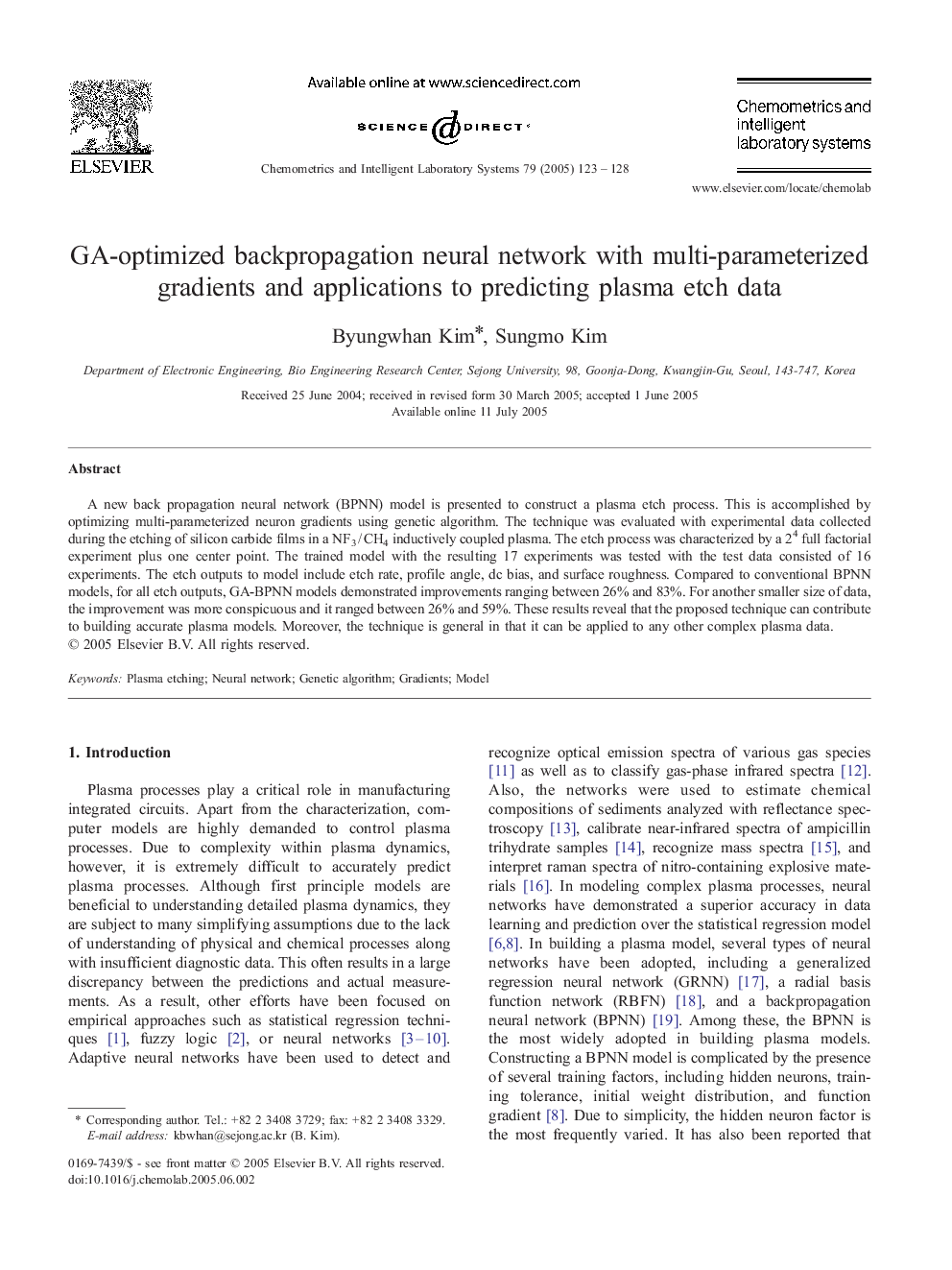| Article ID | Journal | Published Year | Pages | File Type |
|---|---|---|---|---|
| 9745502 | Chemometrics and Intelligent Laboratory Systems | 2005 | 6 Pages |
Abstract
A new back propagation neural network (BPNN) model is presented to construct a plasma etch process. This is accomplished by optimizing multi-parameterized neuron gradients using genetic algorithm. The technique was evaluated with experimental data collected during the etching of silicon carbide films in a NF3Â /Â CH4 inductively coupled plasma. The etch process was characterized by a 24 full factorial experiment plus one center point. The trained model with the resulting 17 experiments was tested with the test data consisted of 16 experiments. The etch outputs to model include etch rate, profile angle, dc bias, and surface roughness. Compared to conventional BPNN models, for all etch outputs, GA-BPNN models demonstrated improvements ranging between 26% and 83%. For another smaller size of data, the improvement was more conspicuous and it ranged between 26% and 59%. These results reveal that the proposed technique can contribute to building accurate plasma models. Moreover, the technique is general in that it can be applied to any other complex plasma data.
Related Topics
Physical Sciences and Engineering
Chemistry
Analytical Chemistry
Authors
Byungwhan Kim, Sungmo Kim,
